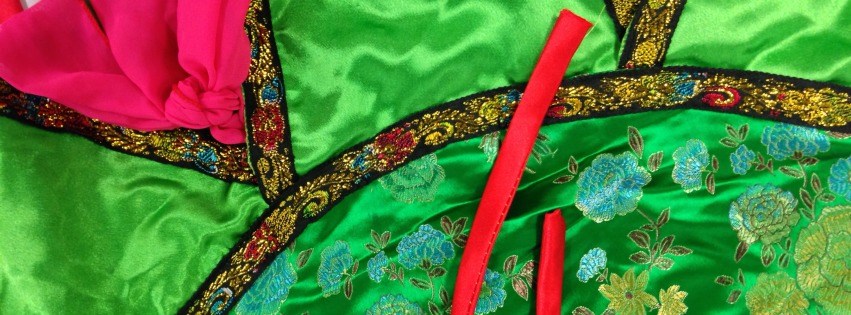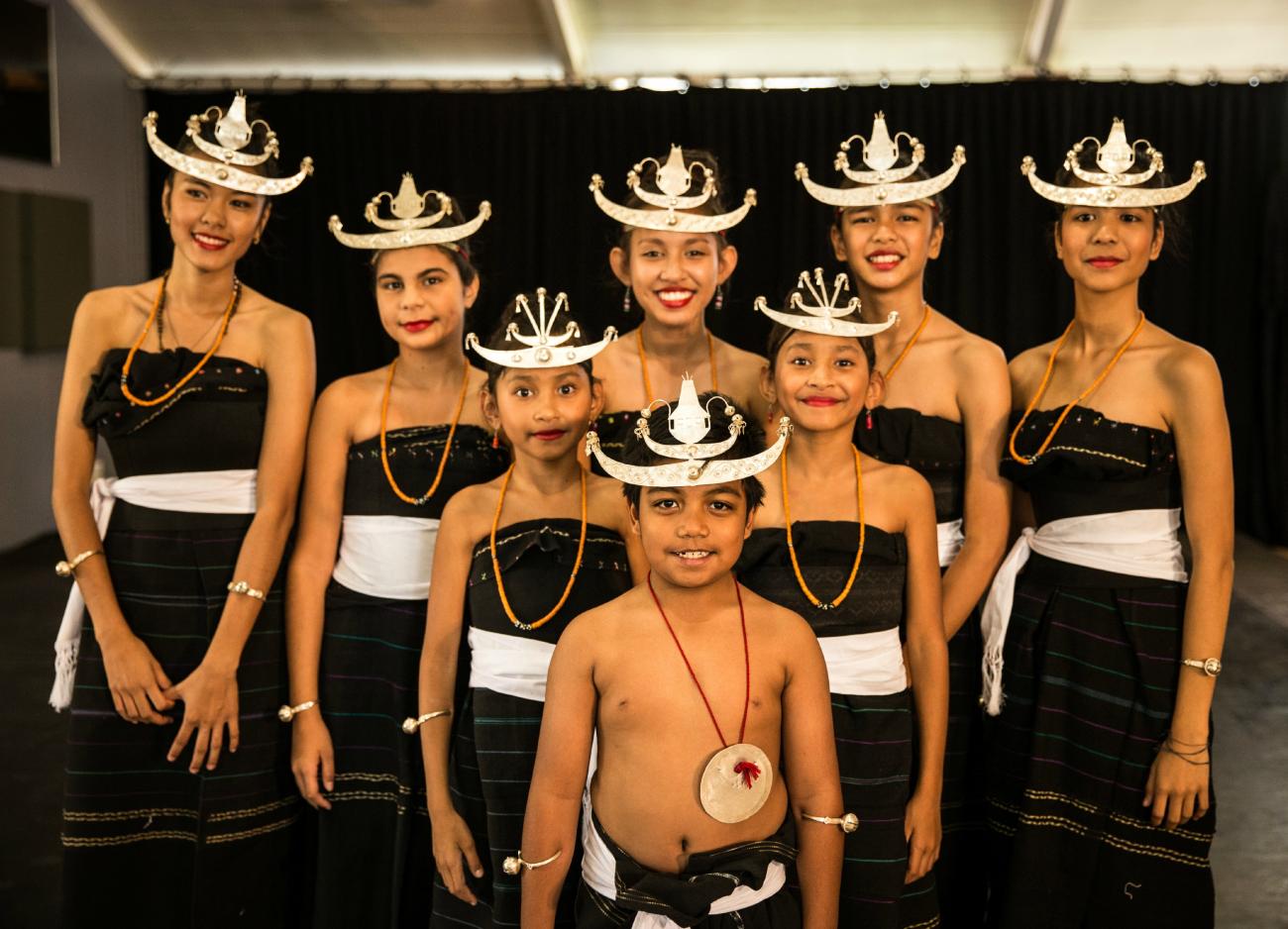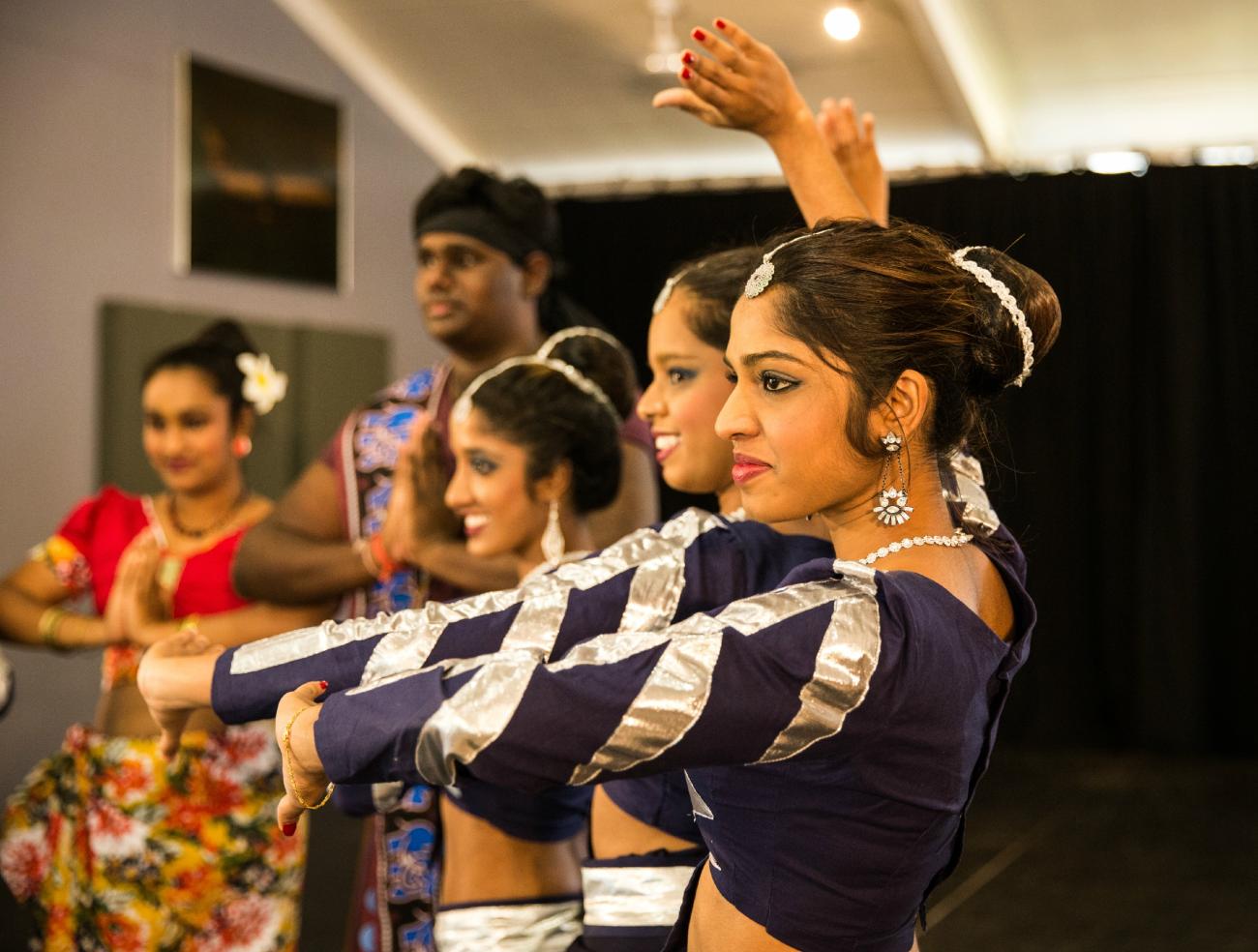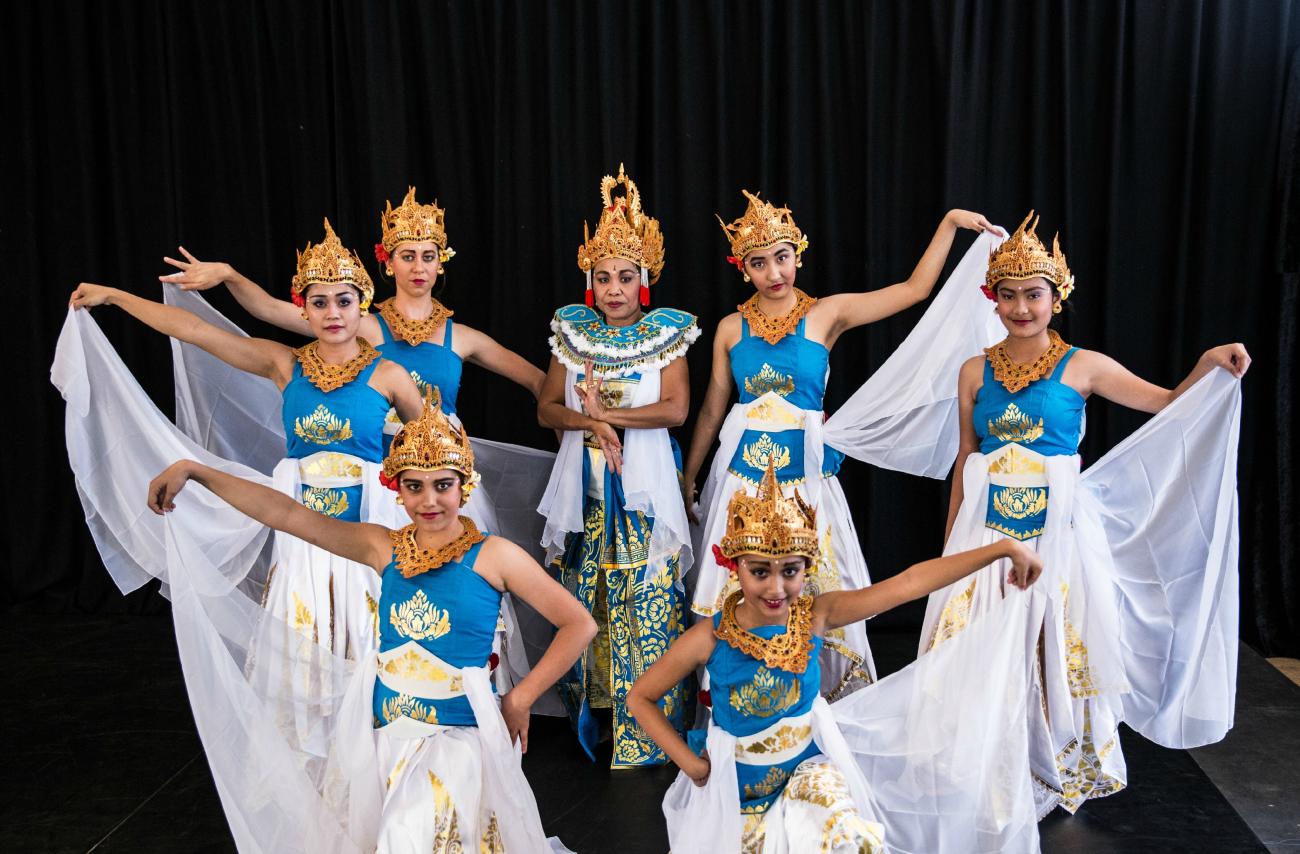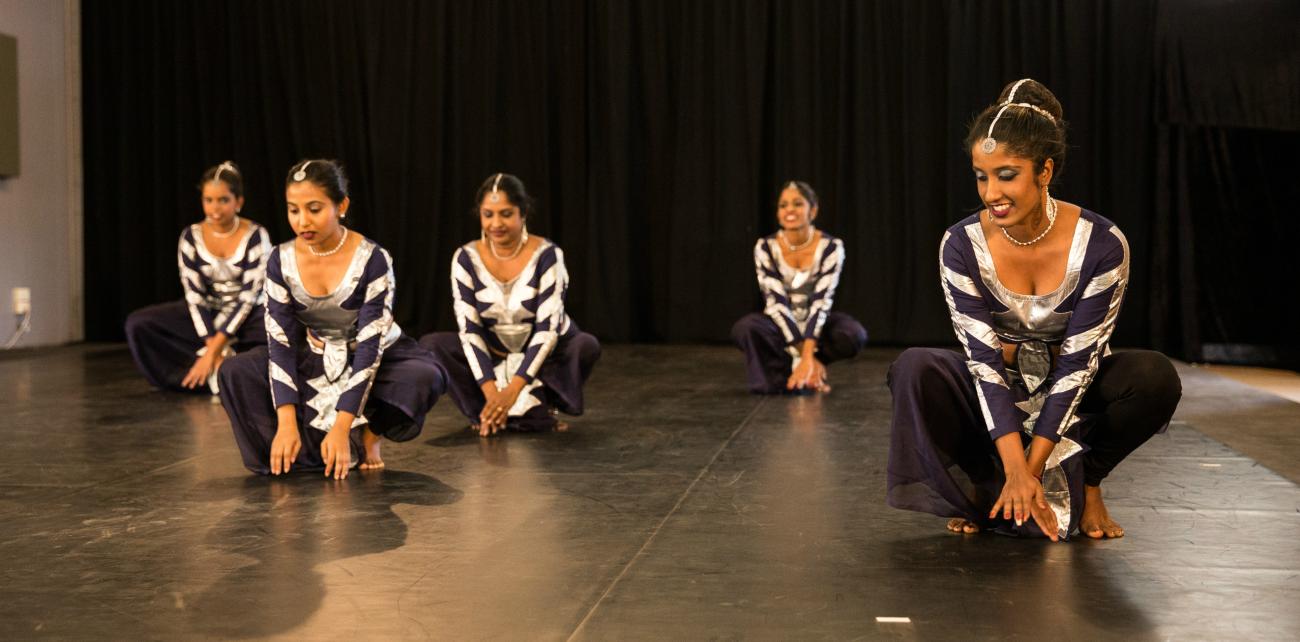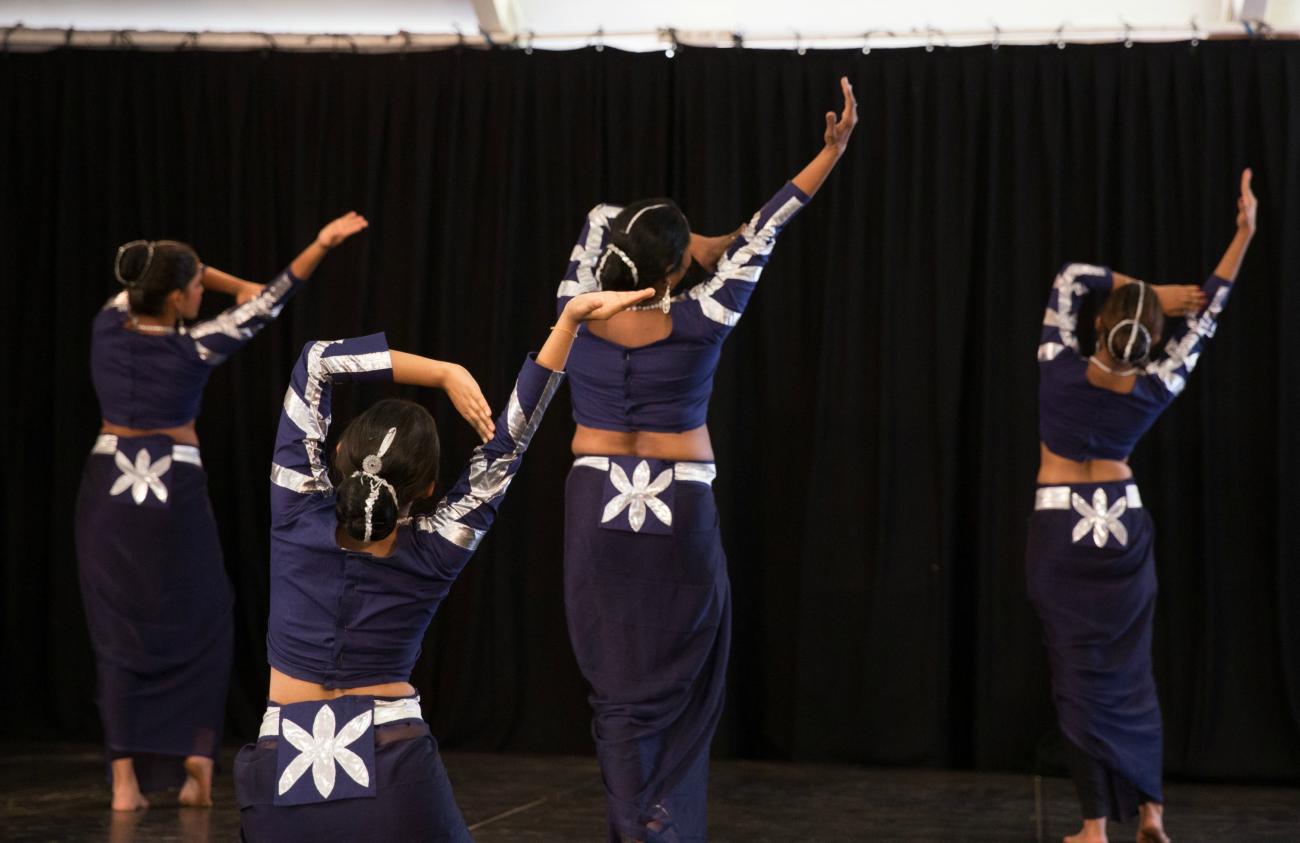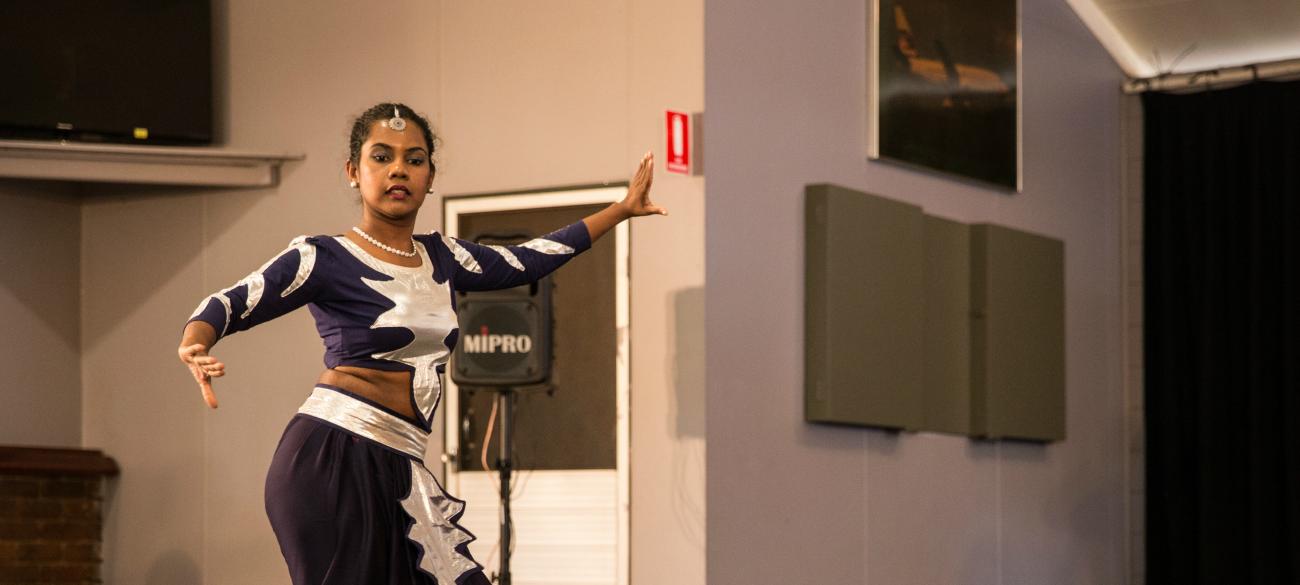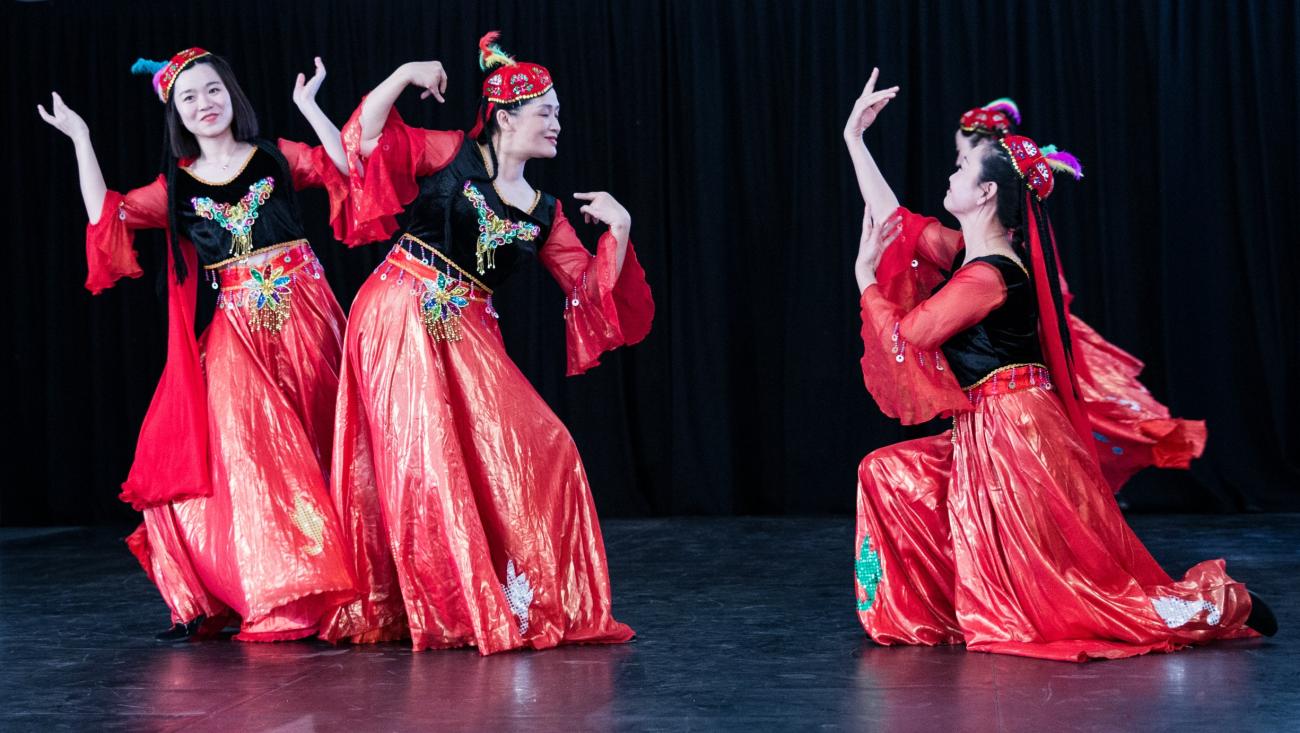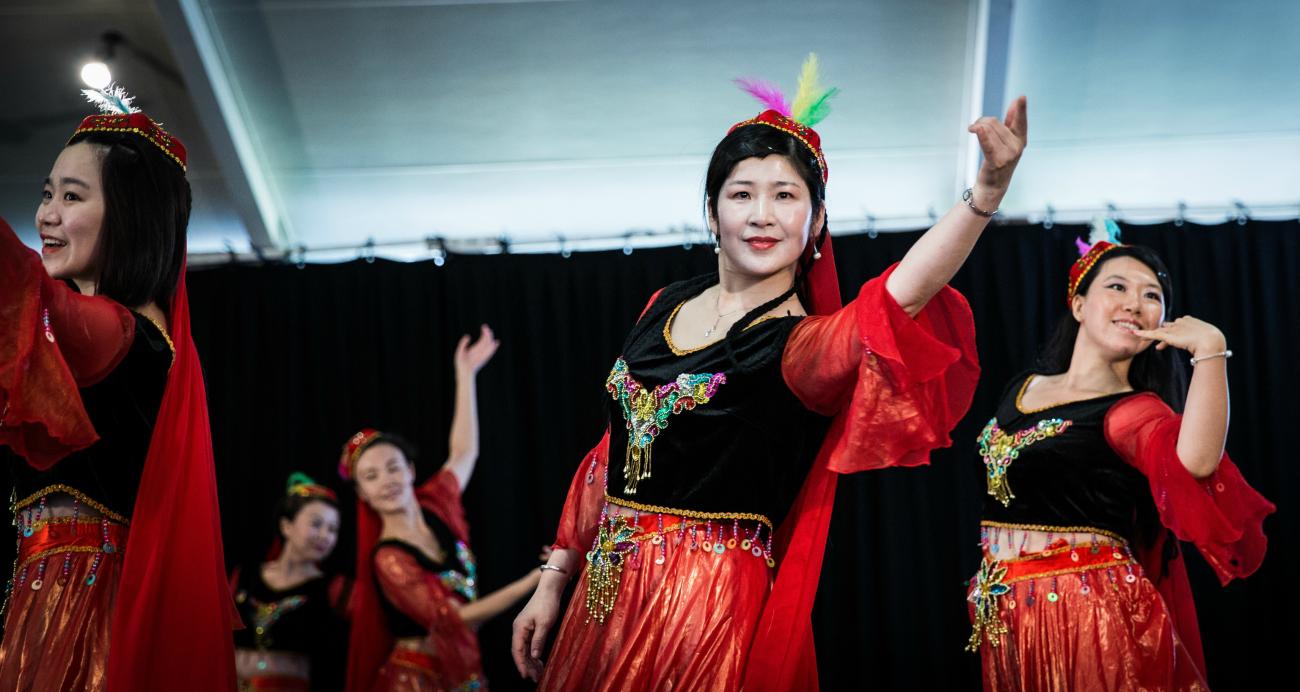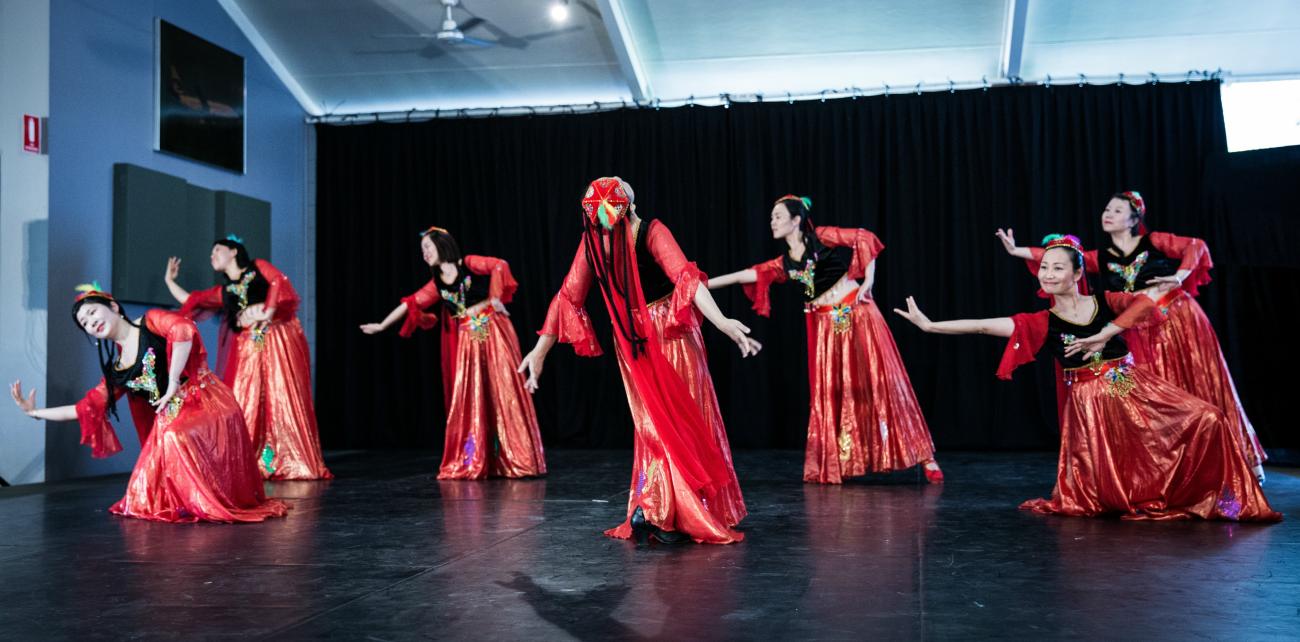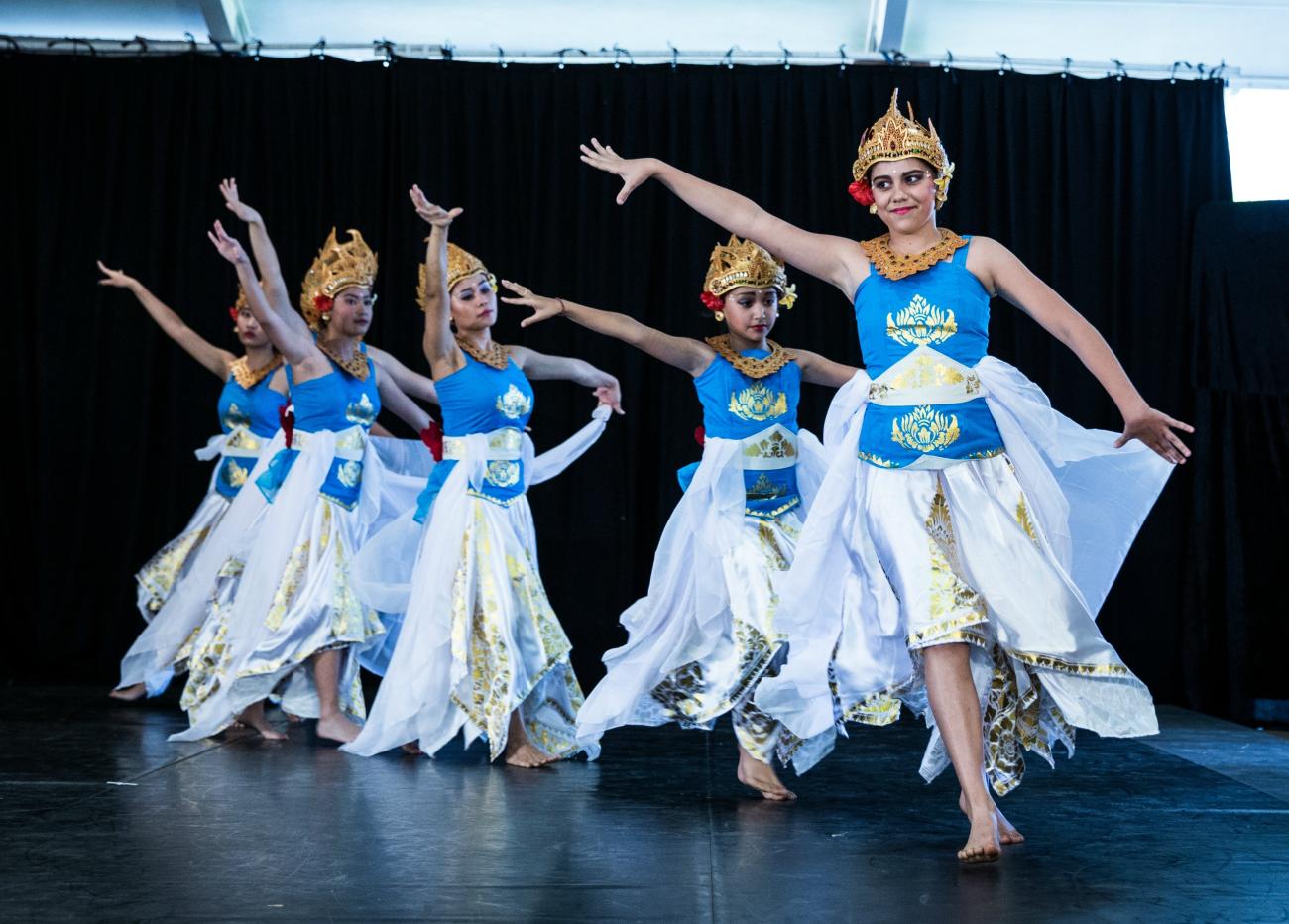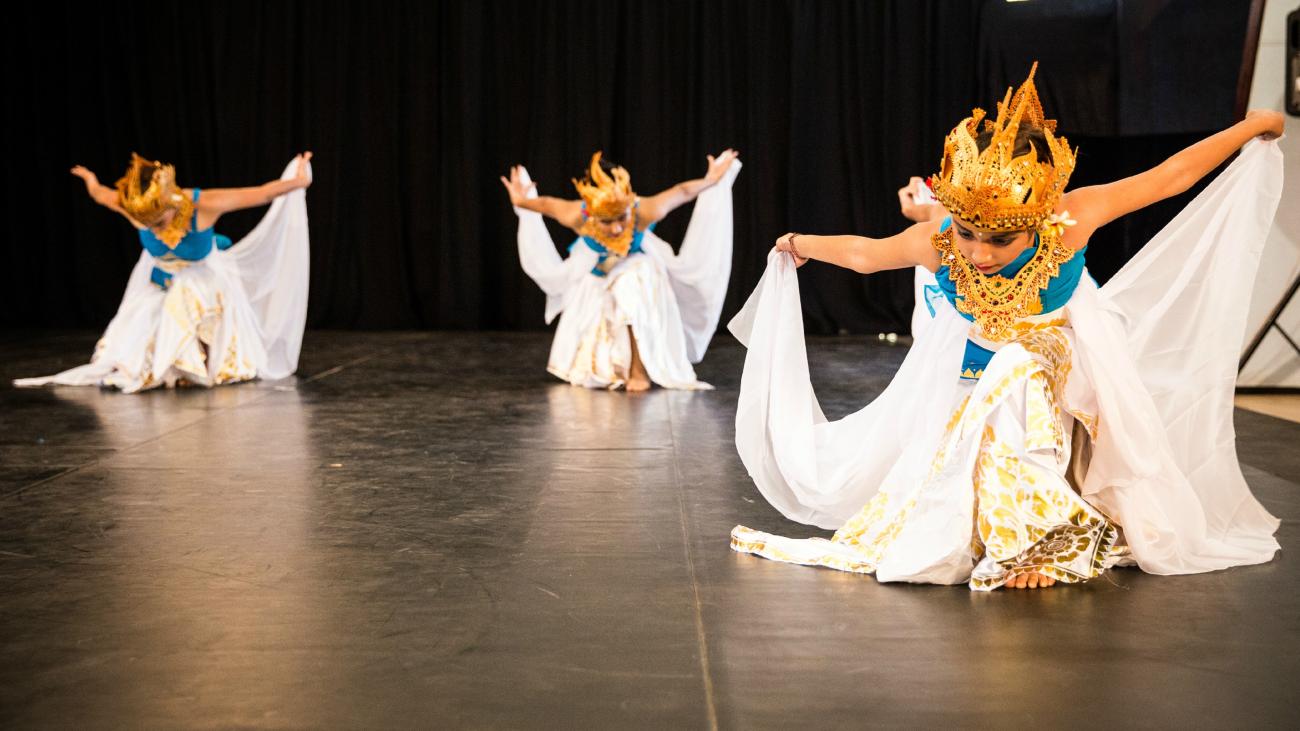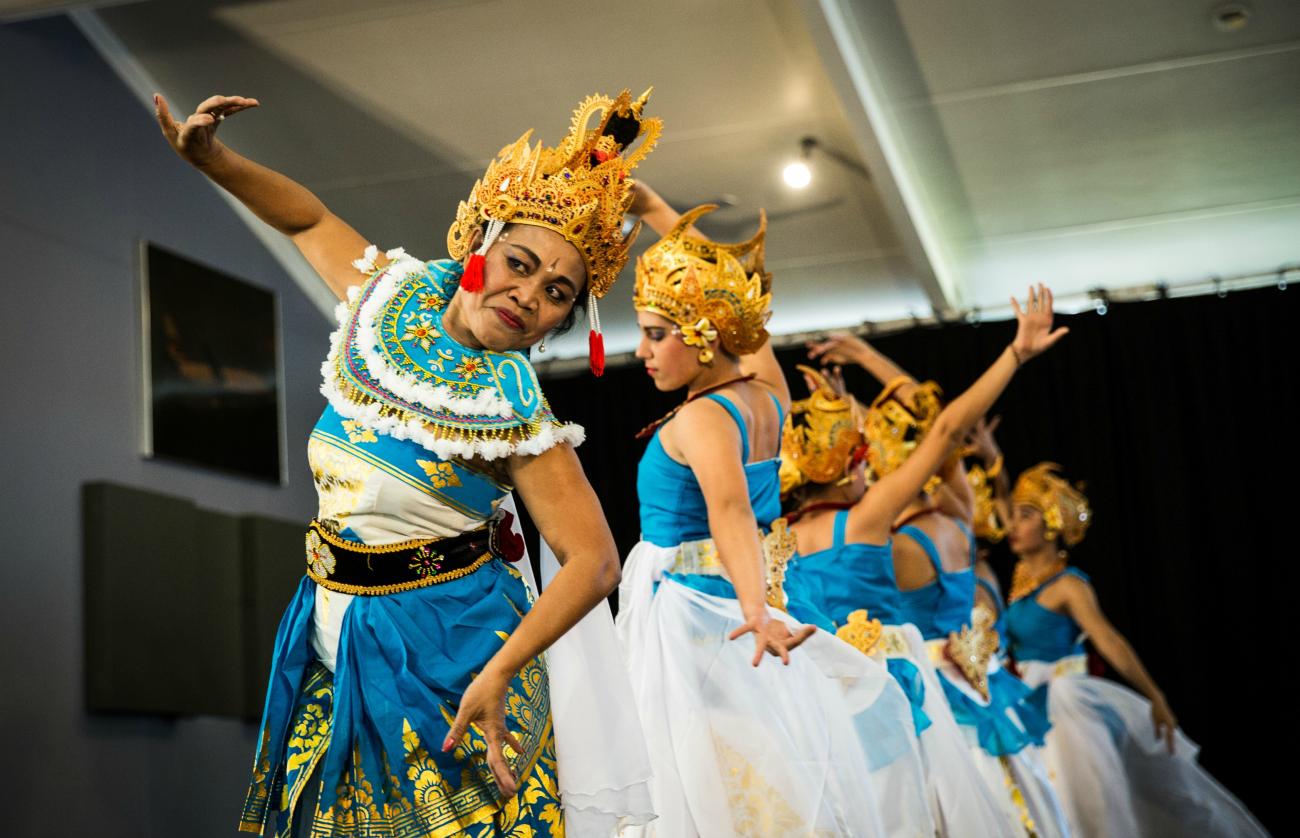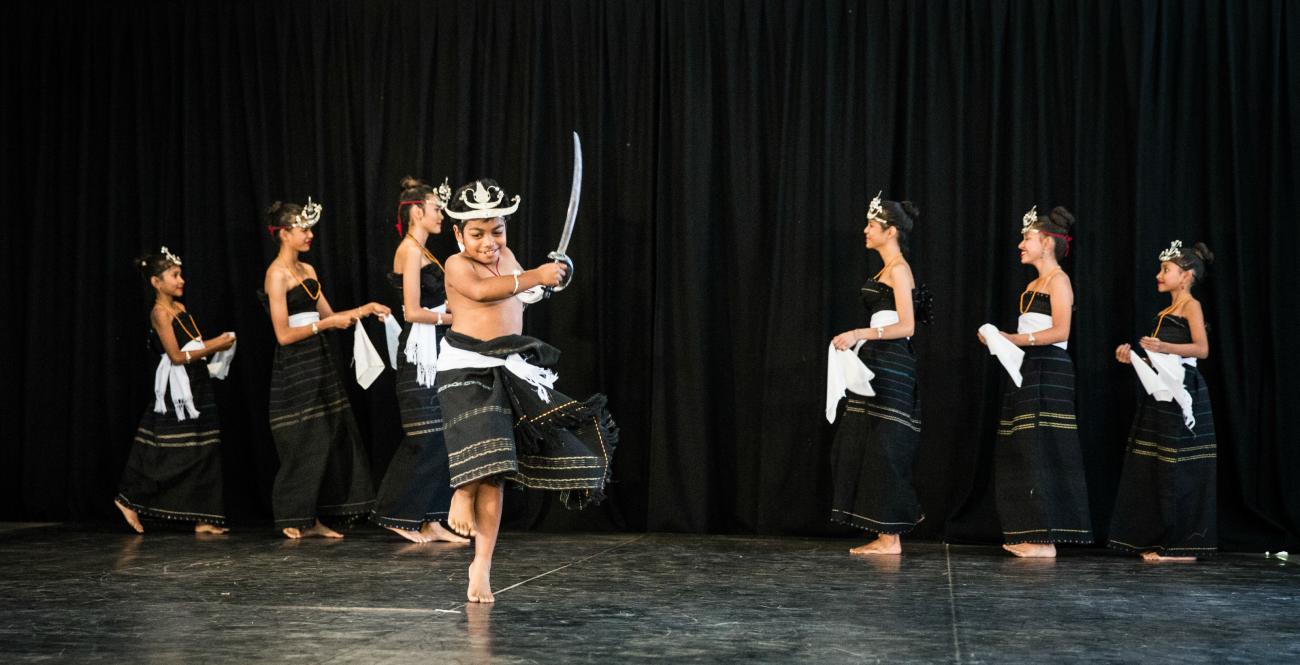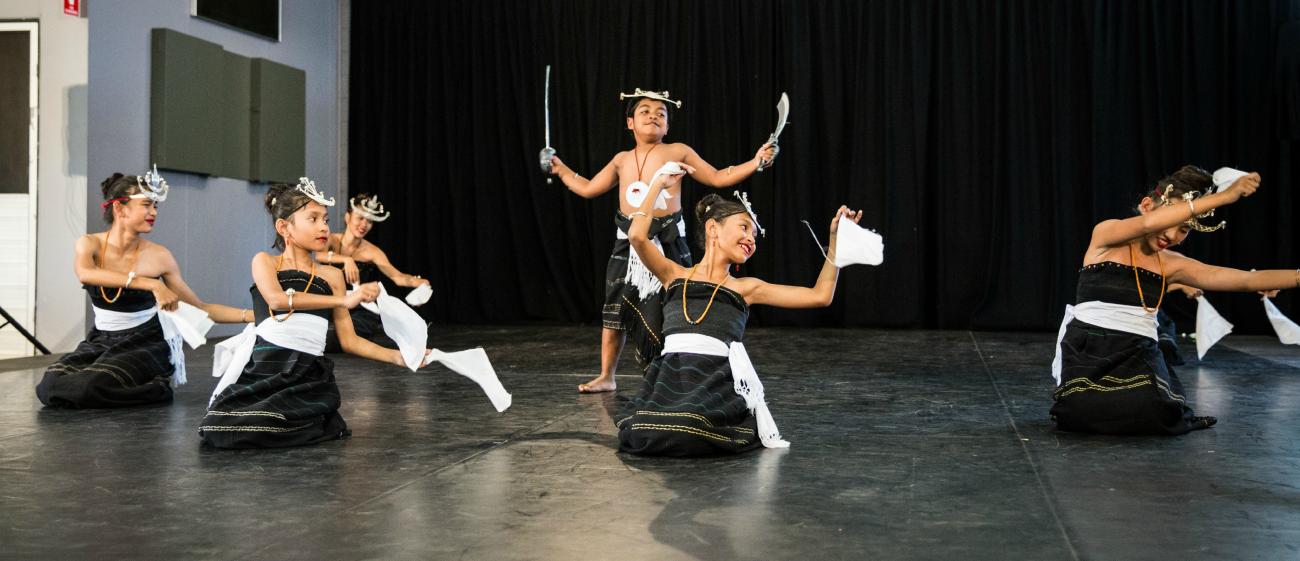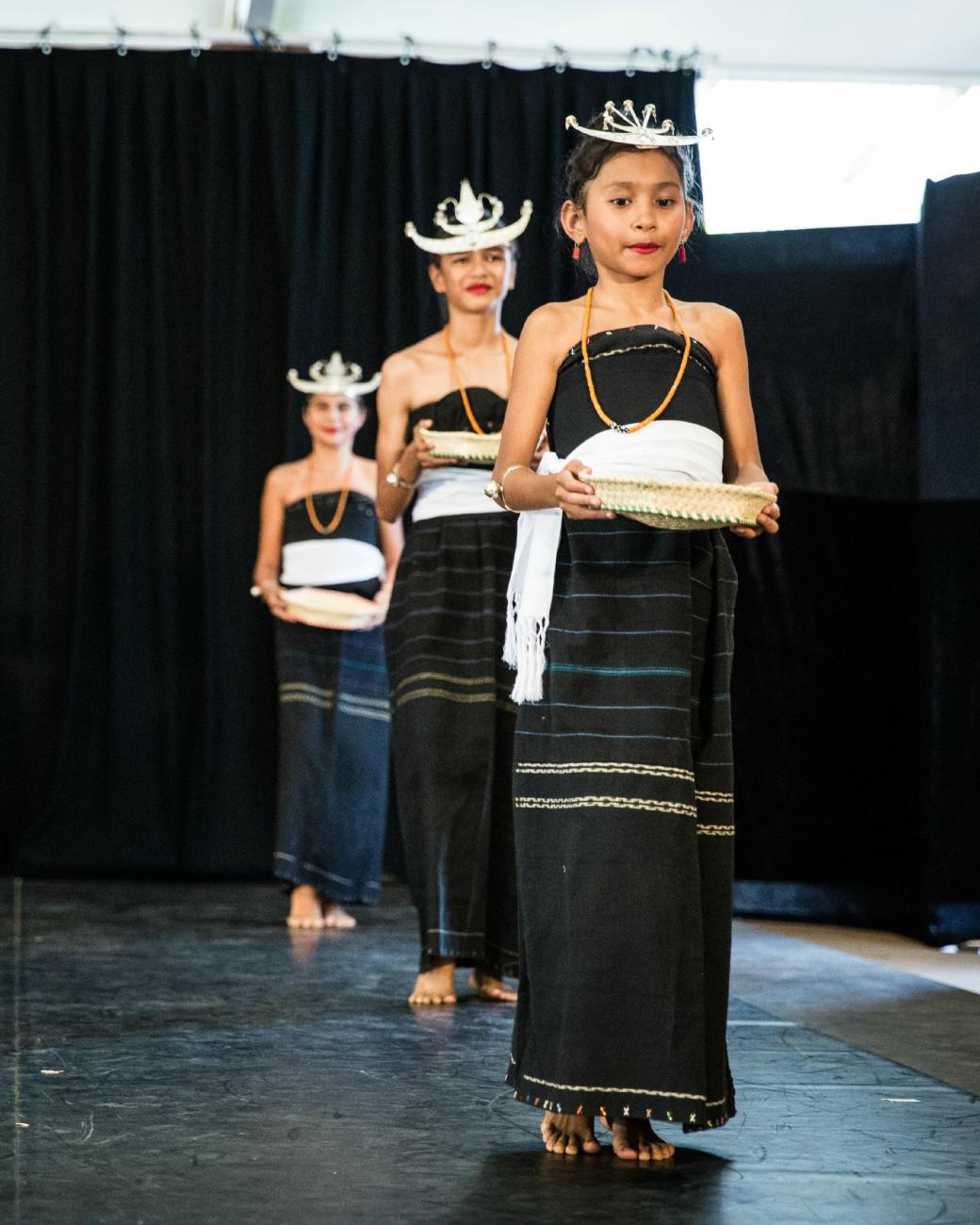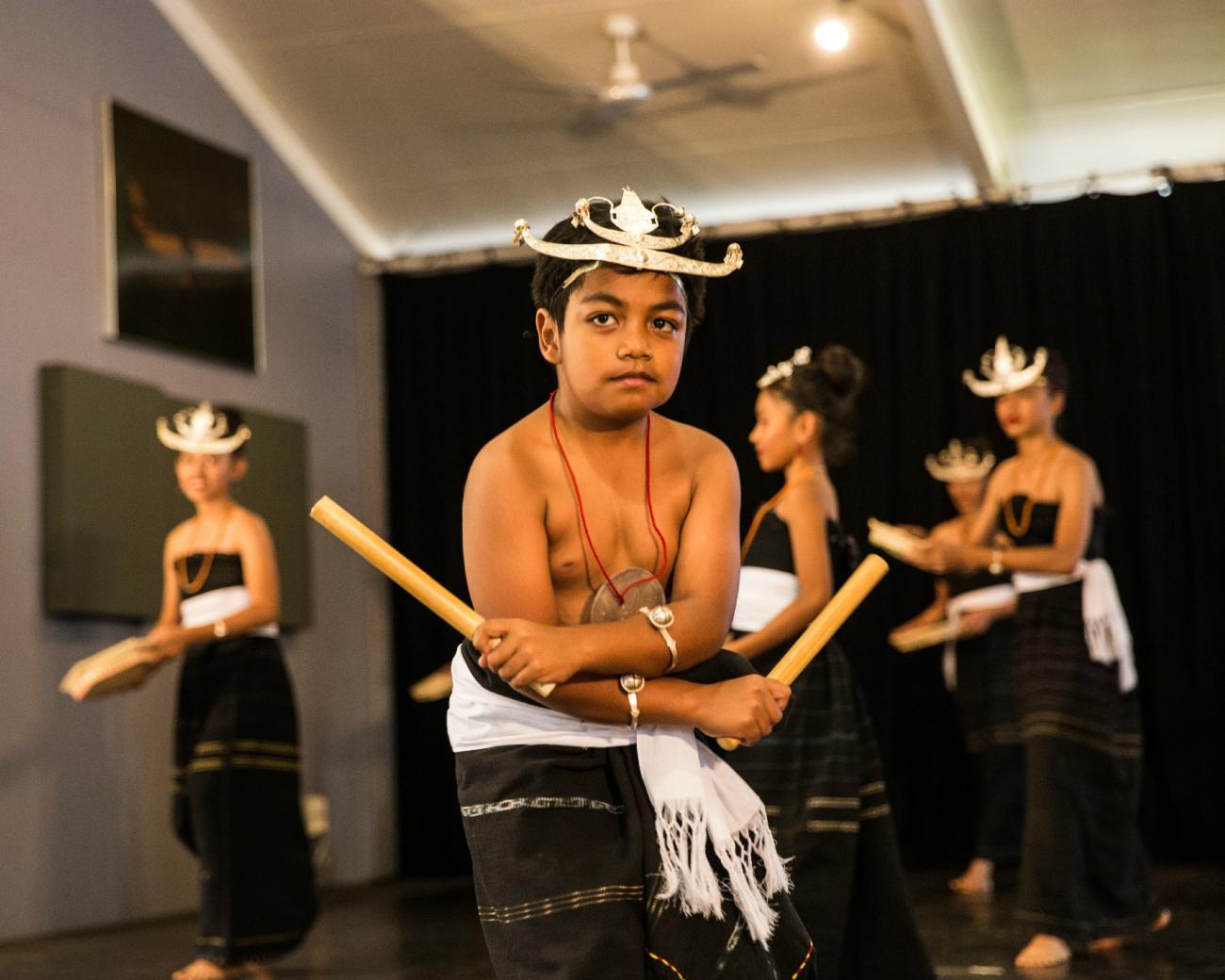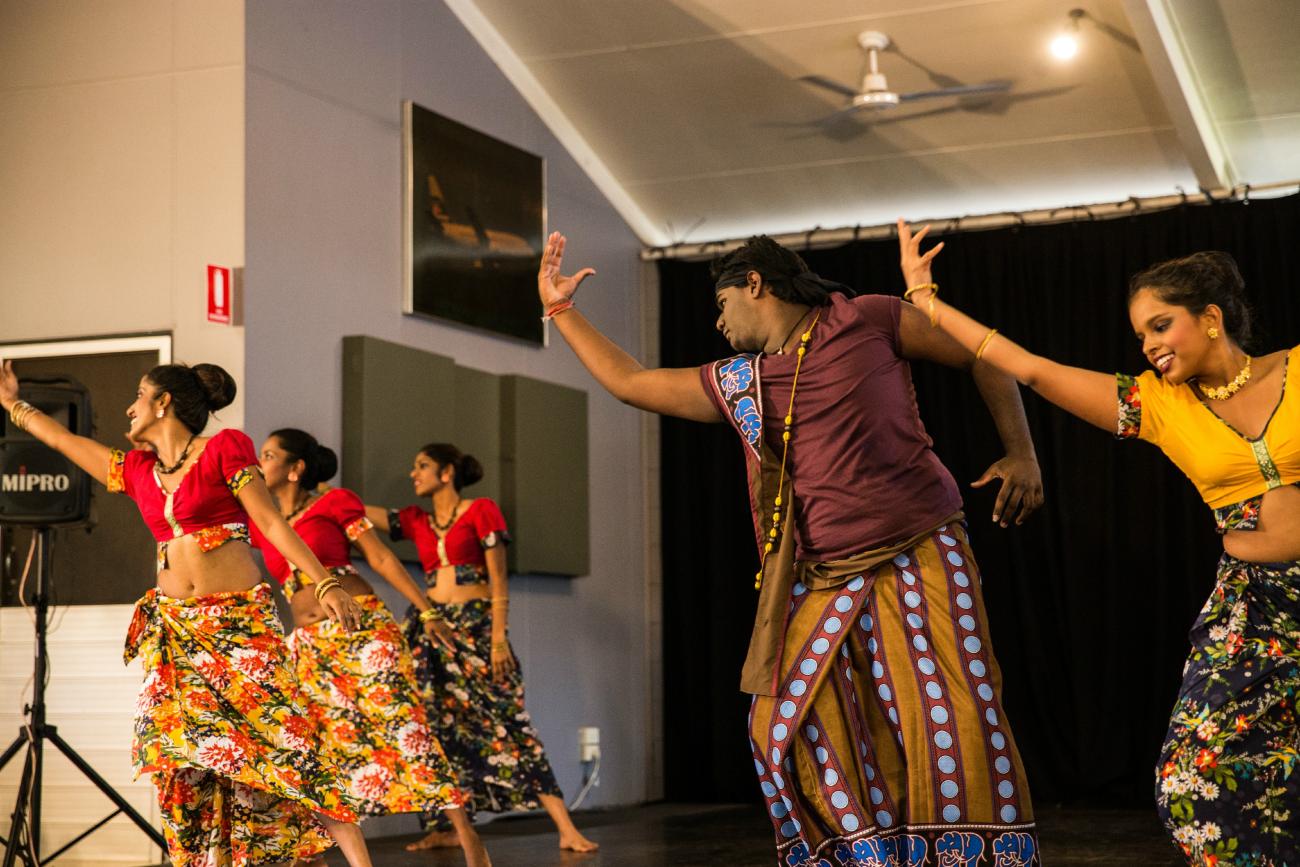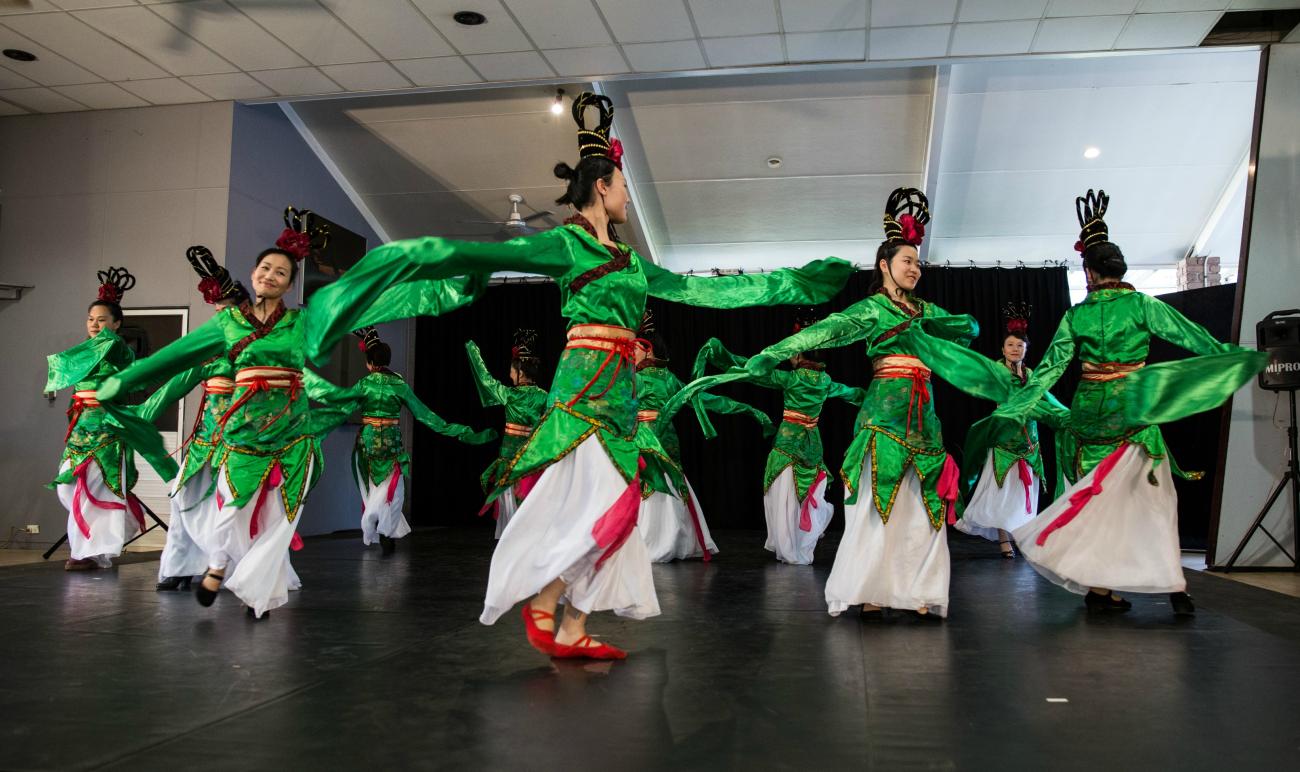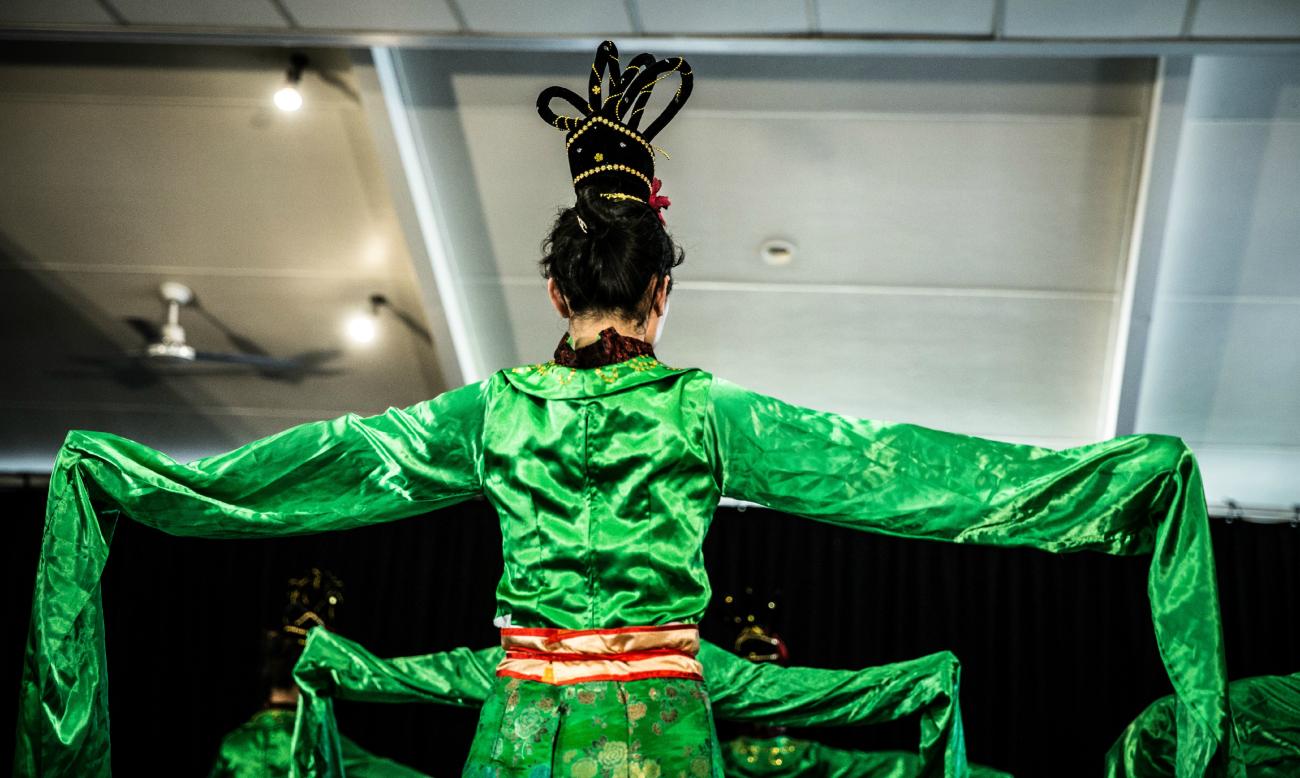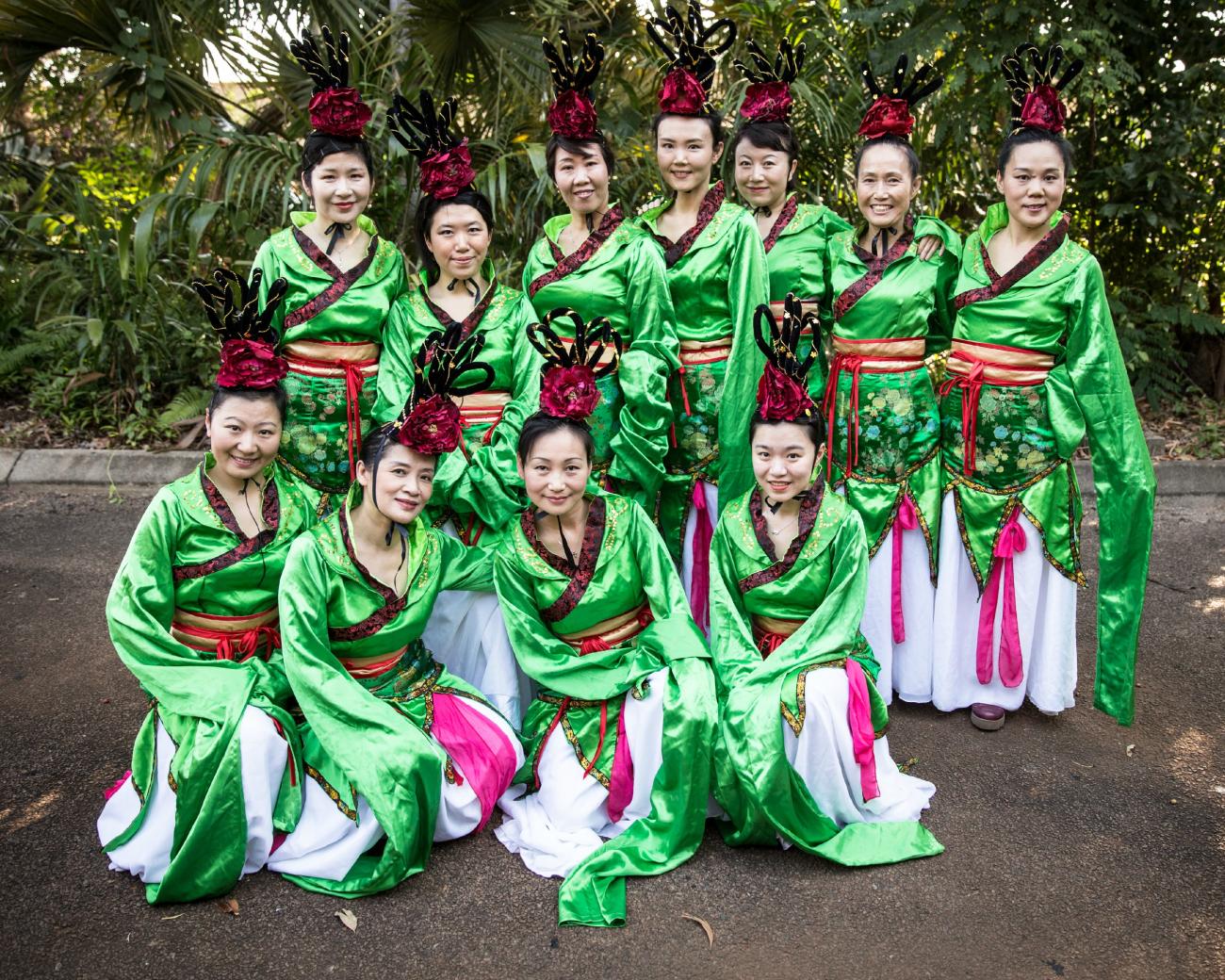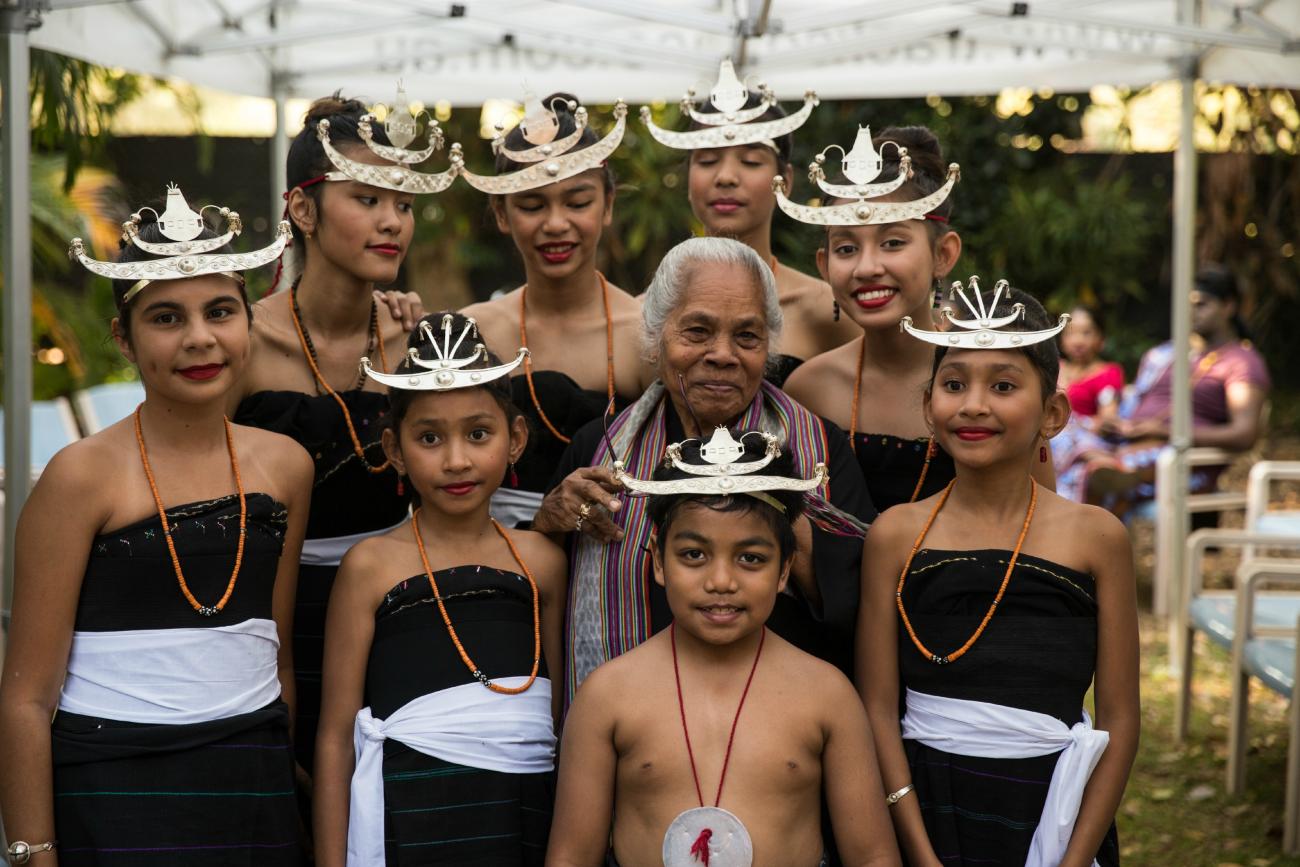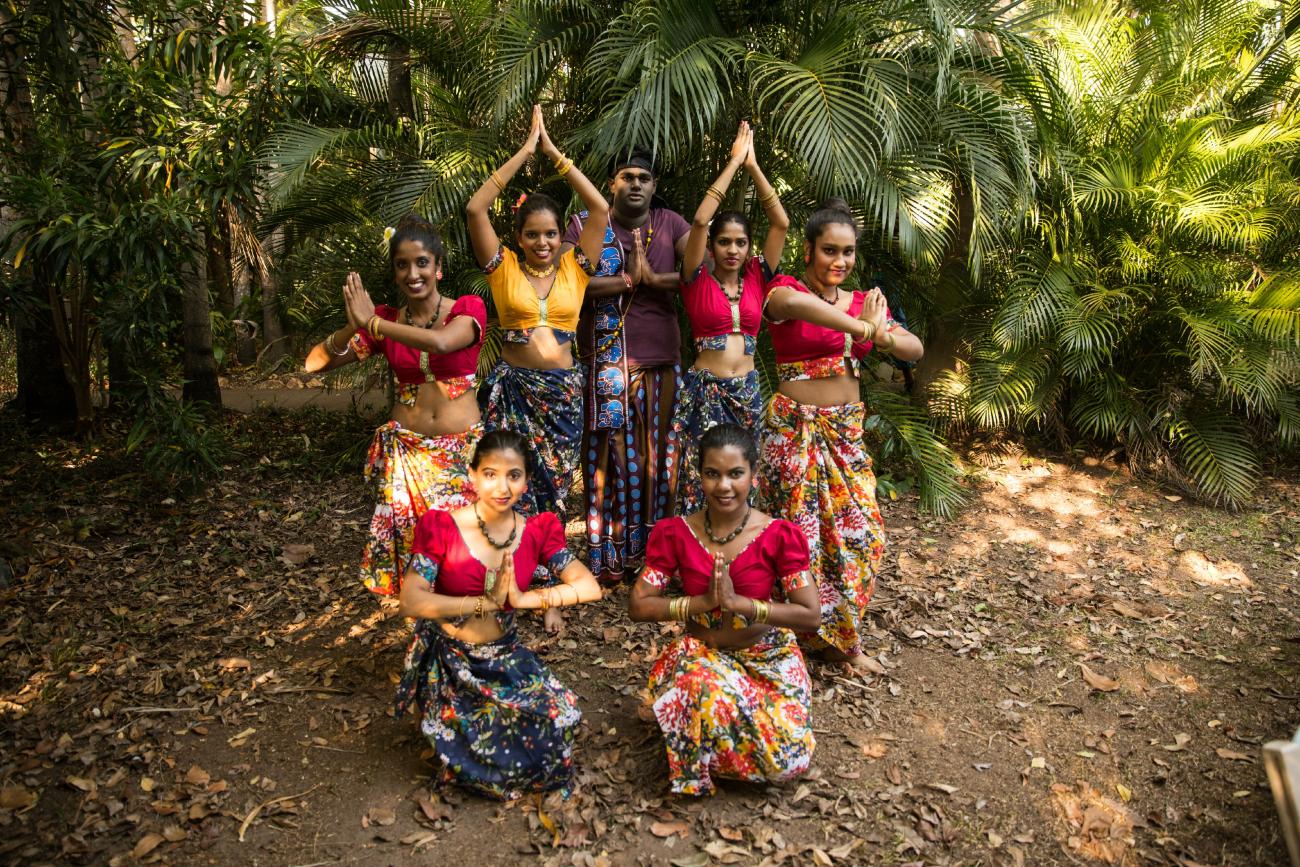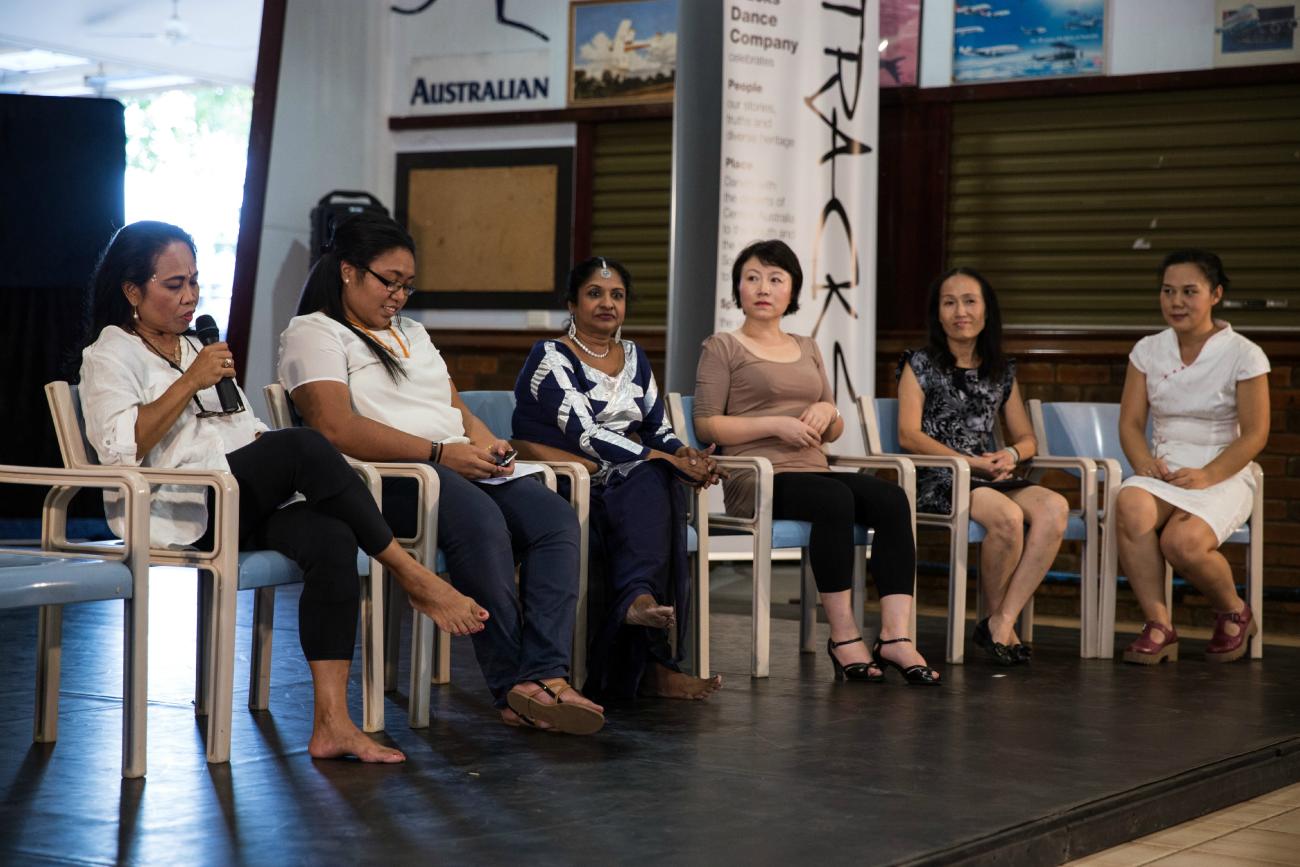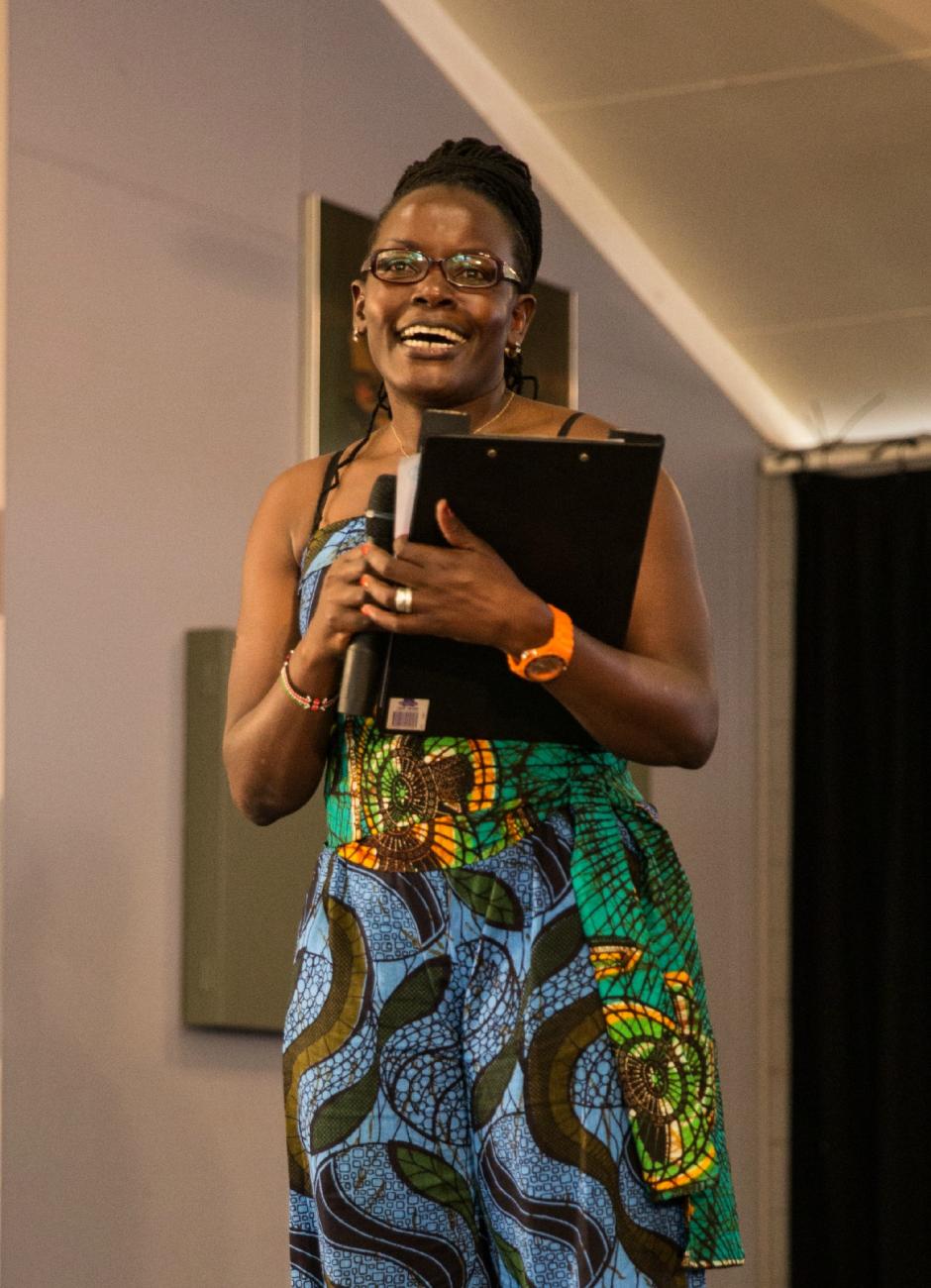Hidden Meaning
Text
Darwin Airport Aviation Institute, Marrara, Darwin
May 16-17, 2015
Four Cultural Dance Groups Reveal the Stories Behind Their Costumes
A recurring issue with many cultural groups, (teased out during our 2013 Cultural Mapping Project) is the importance of design and costume to the deeper understanding of culturally specific dance. Hidden Meaning is a performance and forum featuring four local cultural dance groups who have been supported in the purchase of appropriate attire or fabric to create costumes. The groups created dance works along with verbal presentations about the costumes and their significance to the dance, their hidden meanings, and how this might be understood in contemporary Darwin. Darwin audiences got an insight into the way local cultural groups maintain long links with their dance cultures. Hidden Meaning is assisted by the Office of Multicultural Affairs.
Creative Team
Cultural Dance Leaders:
Shu Qin Li, Chandrika Munasinghe, Desak Putu Warti Stretton, Decideria Alves
Project Dance Animateurs:
Bryn Wackett, Lailah Masiga, Kelly Beneforti, David McMicken and Tim Newth
Performers
Tunas Mekar Balinese Cultural Collective
Lillian Cowan, Suryani Sumendra, Ketut Suyeni, Rizky Devaniputeri, Kelly Beneforti, A.N. Kanga Nadila Siregar and Desak Putu Warti
Multicultural Dance Academy (Sri Lanka)
Chandrika Munasinghe, Eranda Munasinghe, Senuri Pinto, Madushi Fernando, Mayuri Fernando, Shashi Kulatunga, Rashini Weerasinghe and Umesha Senevirathna
Australia China Friendship Society
Teng Jie, Zongmin Chin, Wanzi Han, Daisy Deng, Jane Zhang, Tina Ma, Nan Zhang, Lucy Lu, Rui Xu, Miao Xin Yu and Shu Qin Li
Bua Sareng Timor Dance Group (Timor Leste)
Bernadete Aniceto, Lidia Aniceto, Jessica Murdock, Bakhita Valadares, Tamaziana Valadares, Tamaya Valadares, Margaretha Aniceto and Bertinho Alves
Scenario
Sri Lankan: Traditional Hanuma Vannama (The Dance of the Monkey/Recital of the Monkey) Giren Girata
Originally Vannams were a form of recitation. The most well known among these are the “Hanuma Vannama”. It describes a great “Hanuman”, a Hindu deity, who was an ardent devotee of Rama according to the Hindu legends. “Giren Girata” is the starting words for Hanuma Vannama. This specially created dance is an abstract of the melody of Hanuma Vannama and is composed and interpreted in a certain mood (rasaya) or expression of sentiment.
Chinese: Xin Jiang Dance
This cultural dance is from the Xinjiang Province, a minority cultural region in North West China, bordering Kazakhstan, Russia and Mongolia. The dance was originally inspired by the 1963 movie ‘Visitors to the Ice Mountain’, set in the Xinjiang Uygur Autonomous Region. It describes a love story during the chaotic times after 1949 and into the early 1950’s. The film and song became very popular at the time. The dance is always performed in a red costume. The costume is more contemporary than traditional and influenced in style by the regions close to the borders.
Balinese: Tari Saraswati
Hindu Goddess of Knowledge, Music, Arts, Wisdom and Learning - The dance piece looks traditional but is actually quite contemporary. Saraswati was mainly painted, sculpted and carved up until about 5 years ago when choreography was finally revived to depict her nature. Both the costume design and choreography for this piece today come from a specific region in Ubud, Bali called Sukawati Village. Putu dances the role of Saraswati and the girls are depicting her Swans. The Swan symbolises the vehicle/ride of the Goddess.
Timor Leste: Ina Lou
This is a song-dance from the Suai Region of Timor Leste, usually performed for dignitaries and as a ritual performance to honour loved ones and ancestors. Ina Lou translates as “Beloved Mother”. The Tais worn in this and the following dance come from Marobo, located in the District of Bobonaro. The elegant textiles of Marobo are distinctive amongst Timor-Leste textiles for their dominant black colour. Possibly the oldest continuous textile traditions of Timor-Leste are maintained in this remote, mountainous area of western Timor-Leste and have been continuously been produced for hundreds, if not thousands, of years.
Timor Leste: Danca Lafatik
Lafatik is a traditional woven East Timorese basket made from pandanus. It is used in all villages in Timor Leste and it is primarily used for separating grains from the chaff. Lafatik is also an artifact, and these differ greatly in design and colour from the everyday plain “Lafatik” to a variety of intricate images and patterns weaved into it.
Sri Lankan: Village Dance
This particular folk song depicts a strong relationship between the Sinhala New Year and Sri Lankan culture. After harvesting, the economy of the villagers was prosperous and their homes were full of homegrown food items. Villagers used to celebrate the New Year in harmony enjoying the festive season of their best. The performance is set to the rhythm of a lovely song using free style dance techniques.
Chinese: Ta Ge - Ta Ge
Ta (step) Ge (singing) This is a very ancient and traditional palace dance from the Han Dynasty, one of the most powerful and longest running dynasty's in Chinese history. The costumes worn depict the actual clothing and fashion worn by the imperial court ladies from that time. The dance describes the custom of the palace girls as they walk outside across the green fields of spring singing and picnicking. The costume will always highlight green and white to represent the outdoors and new growth of spring.
Open Forum
Facilitated by Lailah Masiga. The four cultural dance groups reveal the stories behind their costumes.
About the groups
Tunas Mekar Balinese Cultural Collective
Was established in 1993 by Desak Putu Warti Stretton. Putu contributes to many arts education projects in several schools and is often requested to consult and practically contribute to festival performances, social issue conferences, artists residencies in Asia and collaborates frequently with the Indonesian Consulate and it's associated community based events.
Putu runs regular dance classes for children from 5 years old to adults and Balinese Gamelan classes for adults who are interested in playing Balinese Orchestra called Beleganjur.
Rehearsals for dances are done with scarves, sarongs and other attachments emulate the actual costume. It is very common practice in Bali to rehearse this way and put the actual costume on for the first time for the performance only. Costume preparation is an important and ritualistic part of the entire performance. A sense of power comes from being in costume. The dancers become the character. Being in costume and the prayer before the performance creates a heightened sense of stage presence for the dancer. This is called ‘Taksu’ which is the ‘indescribable essence of spirit’.
Putu is inclined to purchase her costumes directly from Bali from traditional sources and villages.
Tracks has collaborated with Putu on many projects, most notably Zombies in the Bayan Tree for the 2013 Darwin Festival and Allure to Paradise.
Multicultural Dance Academy (Sri Lanka)
Is open to all interested in dance and from all cultural backgrounds. The Sri Lankan dance performances are choreographed by Chandrika Munasinghe and have been taught and shared in Darwin since 1989.
The works have been displayed at Sri Lankan community events such as New Year celebrations, for Darwin Festival in 2008, many ongoing Multicultural events organised by Darwin Community Arts, Harmony Day performances, India at Mindil, City of Palmerston Festival and Nightcliff Seabreeze Festival's vibrant Dance Stage.
The group has been involved with Tracks Dance Company on several projects; The Opening Ceremony of the Arafura Games in 2005, Without Sea which involved six different cultures in 2006 and 8-80 The Architecture of Age for their 2012 Darwin Festival season. "The project 'Hidden Meaning' has been an important opportunity for our group to perform, discuss and share our fantastic costumes and the significant meanings behind them." Chandrika Munasinghe
Multicultural Dance Academy currently runs regular classes for children from 4 years old to adults for a small fee. The Academy promotes an exchange of culture and friendship through our dance and the networks it creates here in Darwin.
Chandrika is more inclined to having her costumes made here in Darwin by her mother and her Sri Lankan community members who carry the skills and knowledge in these styles of costume and dress making.
Australia China Friendship Society Dancing Troupe
The troupe is a very active group of artists who participate in all major multicultural events. They have been performing their many beautiful traditional and cultural dances on stage since 2009. Group leader, Shu Qin Li explains that their original choreographer who used to live here in Darwin is now brought up at certain times throughout the year from Melbourne to continue the strong affiliation they had with her to form the choreography onto the dancers and keep traditional dances alive and re-inspired.
The Australia China Friendship Society (ACFS) is a not-for-profit organisation, run completely by volunteers. It was founded in the early 1950s to promote friendship and understanding between the people of Australia and China. It has no political affiliation. The Northern Territory Branch was established in 1970s. The NT Branch holds monthly meetings covering a wide range of activities. In 2012 Shu Qin Li took over Presidency of the Society and with her enthusiastic Dancing Troupe organised 3 Multicultural Dancing Nights. The Troupe has performed at many functions such as National Day, Harmony Day and many other community events all over town, giving great publicity to the ACFSNT.
Shu chooses to order all costumes for the Dancing Troupe online, direct from China and has them sent here to Darwin. There are specific styled and coloured costumes for specific dances to depict the region in which the dances and stories come from. For example, the costume worn for their 'Tai Ge' piece, performed for 'Hidden Meaning' tells an informed audience, before the dance even begins, which Dynasty and which region the dance is from and about.
Bua Sareng Timor Dance Group (Timor Leste)
The name "Bua Sareng Timor Dance Group" comes from the Timorese language Tetun which means the ‘palm bud/flower’ Timor Dance Group.” The word 'Bua' is Areca or Betel (nut). Usually Bua is eaten together, with Betel Pepper, by Timorese ladies as a replacement to tobacco or smoke.
The word 'Sareng or Funang' means the bud or flower of the palm tree. Bua Sareng Timor Dance Group was recently formed in March 2015. The talented children of Timorese Community recognised that they are Timorese children, even though they were born in Australia. Therefore, it is an obligation for them to continue promoting their national identity through arts and traditional dance. This is clearly demonstrated in their practice where no adults, professional dancer or choreographer has led them in the first place. Inspired by her mother, the 19 year old, Decideria Alves, has taken the courage to design some basic movement for these dances, taken from past traditional dances and inspired by her Uncle, a choreographer in Timor Leste.
Through this passion the group aims to share the uniqueness of Timorese Culture and holds a strong commitment to preserving the Timorese traditional dancing. Bua Sareng Timor Dance Group is committed to exploring new ways for improvement and new inspiration for expansion and variation in their performance.
The group is also open for input and feedback from people who have experience in choreography or professional dancers who may wish to guide them to a high level. ‘Bua Sareng Timor Dance Group’ is committed to continuing and maintaining the cultural value of Timorese dance that promotes national identity as an essential instrument in the multicultural society of Darwin.
The Tais worn come from Marobo, located in the District of Bobonaro. The elegant textiles of Marobo are distinctive amongst Timor-Leste textiles for their dominant black colour. Produced by weavers from the villages of Atu Aben, Rita Bo and Rai Fun of the Bobonaro District these textiles are noteworthy for their use of traditional production methods. Possibly the oldest continuous textile traditions of Timor-Leste are maintained in this remote, mountainous area of western Timor-Leste where a limited range of classic motifs and textile styles have been continuously produced for hundreds, if not thousands, of years.
Production and Promotions Personnel
Project Directors: TIm Newth, David McMicken
Production Manager: Kelly Blumberg
Stage Manager: CJ Fraser-Bell
Documentary Photographer: Mathew McHugh
Documentary Film Maker: Amy Hetherington
Stage Construction: Correctional Services Work Parties
Promotions/Publicity: Clancy Breasley and Susan Congreve
Front of House Manager: Noya Chung Wah, Thevi Chelliah
Catering: Lina Febria
Graphic Design: Mark Marcelis and Narelle Sullivan
Thank you
Darwin International Airport, Correctional Services Work Parties, Jose Casimiro, Veronica Pereira Maia, Fatima Aniceto, Cristina Valadares, Filomena Alves, Egas Alves, Corrugated Iron Youth Arts, Vilaisan Campbell, David Turbayne, Buddhist Society of the Northern Territory.
Sponsors
Dreamedia, Southern Cross TV, Darwin International Airport
Funding Bodies
Hidden Meaning is assisted by the Office of Multicultural Affairs.
Tracks Inc is assisted by the Australian Government through the Australia Council, its arts funding and advisory body; and is proudly sponsored by the Northern Territory Government.
Tracks 2015
Artistic Co-Directors: David McMicken and Tim Newth
General Manager: Susan Congreve
Administrator: Clancy Breasley
Production Manager: Kelly Blumberg
Dance Animateur: Kelly Beneforti
Bookkeeper: Heather Van Anholt
Geek in Residence: Jeffrey Withaya Campbell
Committee Members: Michael Grant (Chairperson), Glenn Bernardin, (Treasurer) David Taylor, Ken Conway, Stephanie Cvirn, Mary Durack. David McMicken, Tim Newth, and Susan Congreve (Ex-Officio Members)
Public Fund Trustees: Rev. Steve Orme, Dr Anita Toth, Ippei Okazaki
Patron: His Honour, The Honourable John Hardy OAM, Administrator of the Northern Territory
Photos
Videos
Explore Further
Responses
"Thank you to David, Tim and Tracks Dance Company. I am quite honoured to be a part of ‘Hidden Meaning’.
I see you, ‘Karibuni’ as we say where I come from, which is Welcome in Swahili.
The preceding project ‘Cultural Mapping’ which I was a part of, was a great space to discuss the importance of other cultures within multicultural Australia.
The arts (herein); dance, song, music and oral narrative are often the major expression tools through which most of us express our sense of self; whether cultural, national or simply just as the individual self.
As a dance artist/practitioner who uses all the above cultural expression tools, especially so through dance, my view is that cultural dance does not stand alone in most cases as it is strongly influenced by the correlation with costumes, song and/or music. These respectively contain oral narratives embedded it their forms, with stories, morals, values, customs, and if you like, a ‘manual’ to ways of being in/within respective societies. All these elements are integral to and contribute to my cultural and national identity and therefore influence my self-identification; informing, today, my dual identity as a Kenyan-Australian.
This knowledge/awareness and/or consciousness empowers me with a greater sense of cultural and self-esteem, self-worth and affirmation, and immeasurable confidence in sense of belonging and ability to share own culture within this environment, multicultural Australia.
Costumes in part tell a story of who we are; our histories in symbolic ways. Dance enables us to make these symbols more visible and accessible to others.
I therefore hope that through this afternoon’s performances, we begin to see beyond the colours, designs and sparkles: To see that they are not just external beautification but that costumes carry much spiritual, geographical, social, historical and even personal significance and connections to the dance, dancer and collective cultural groupings.
We are privileged to experience the ‘‘others’ ’’ cultural space this afternoon. So the next time we watch a cultural dance, we can notice the wearable histories, respect and perhaps seeks to learn more about where, who, what it is all about. Assumptions diminish our acceptance of others – to exoticism.
Finally, I hope that the definition of dance becomes more inclusive; accepted for its broadness and diversities, within Darwin and across this multicultural nation. That cultural groups are wholly supported in their selfless efforts to share their traditions and cultures. Cultural dance and costumes cannot be separated I think and resources to achieve and access such costumes are as important as choreographic processes.
I do also hope that the performances this afternoon shed some understanding on this subject so the next time a cultural groups seeks support in this regard, that it is granted/accorded based on informed understanding on the significant role or roles cultural costumes play in the preserving the integrity of traditional/cultural dances.
I see you, I thank you again for journeying here this afternoon. I now present to you the first performance for ‘Hidden Meaning’…."
Opening speech by Lailah Masiga

